If your garden or indoor space features areas bathed more in shade than sunlight, you may be wondering if it’s possible to cultivate the elegance of roses there. You’ll be pleased to know, the answer is a resounding yes! This comprehensive guide is dedicated to the topic of climbing roses for shady areas, offering a curated selection of 36 exceptional varieties that are specially adapted to thrive under less sunlit conditions.
These climbing roses aren’t merely survivors in the shade, they’re true bloomers, bestowing an array of captivating hues, enchanting fragrances, and alluring forms that can transform your shaded nook into a breathtaking rose haven. Even spaces predominantly shrouded in shade can host a rose showcase, adding an unexpected dimension of beauty and depth to your garden or indoor landscape.
In the list below, we’ll not only reveal some of the best climbing roses for shady areas but also offer insightful tips on their care and maintenance. Whether you’re an experienced gardener or a beginner enthusiast, we believe this guide will unlock new horizons for your green thumb. So, continue reading and prepare to be inspired by the diverse range of climbing roses that are eager to flourish in your shady garden spaces!
Table of Contents
Introduction to Roses
Roses are woody flowering plants of the genus Rosa in the rose family Rosaceae. These biennial or short lived perennial plants have distinct flowers which are popular for decoration. They are also called roses.
The different species or cultivars of roses have peculiar colors. They also have different growth habits as some may grow erect while others are climbing or trailing plants. Over 300 species and thousands of cultivars of roses exist.
Rose plants typically have prickly stems. Their beautiful and often scented flowers come in several, distinct shapes, sizes and colors, with most being various shades of white, pink, red or yellow.
You may grow roses in your garden or indoors for ornamental, commercial, utilitarian or culinary purposes. They can be used to beautify your space, for making perfumes or cut flowers, as landscape plants, for game cover and in food or drinks.
Most roses are native to Asia but many others are found in Africa, Europe and North America. Used mostly as ornamental plants, they also come in various sizes, as while some are compact, some climbing varieties grow very tall.
Roses are actually quite easy to grow and care for. They most appreciate full sun and should be watered daily when newly planted, or when grown as potted plants, or every 2 to 3 days when established in the soil.
For their soil needs, they prefer slightly acidic to neutral soil (pH of 6 to 7) that is well drained but fairly moisture retentive, and rich in organic matter.
What are Climbing Roses?
Climbing roses, also known as crawling roses, are those types of roses that trail or grow long, hanging down so as to scramble over any available surface. There are several roses like this and they tend to spread quickly.
They cling to or scramble over surfaces with long, flexible canes covered in flowers. They are suitable for arbors or pergolas, trellises and low walls or fences.
Because not all climbing roses need plenty sunlight and some can grow well in the shade, here are thirty-six (36) of the best climbing roses for shady areas or north-facing walls.
Best Climbing Roses for Shady Areas
1. Albéric Barbier

Albéric Barbier is a robust hybrid rose that can also grow well in full sun. It can be used to cover north-facing walls and fences as it is a very good climbing rose for growing in a shady area.
The fragrant Albéric Barbier is characterized by its cream flowers with light yellow centers that usually bloom once in June. It usually grows up to between 13 and 26 feet (4 and 8 m) in height and 9.8 to 13 feet (3 to 4 m) in width.
2. Ballerina

Another climbing rose that is suitable for shady areas is called Ballerina. It is a hardy, fragrant and shade tolerant plant that blooms from summer well into the fall. This hybrid plant is also very beautiful.
Its gorgeous flowers are made of five pink and white petals. The entire plant may be between 4 and 6 feet (1.2 and 1.8 m) tall. Because of its small size, it can be trained as a small vine.
3. Claire Austin

Claire Austin may be trained as an upright shrub or a climbing rose. Also known as Ausprior, it possesses long stems that may grow up to 8 feet (2.5 m) tall when trained as climbing plants. It is about 3.3 to 4.9 feet (1 to 1.5 m) in spread.
From summer to autumn, this rose produces flowers. Its blooms are large, very fragrant and cupped. They may be cream, creamy white, white or yellow in color.
4. Climbing Cécile Brünner
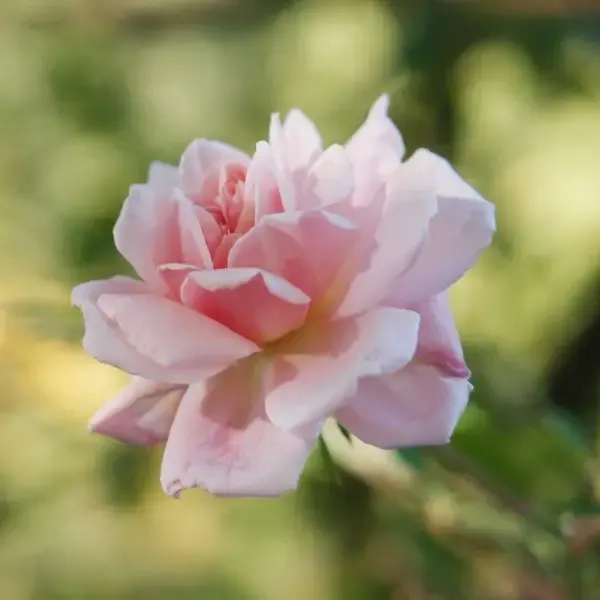
This is another good climbing rose for shady areas. It is a large plant that, unlike most other roses, is almost thornless. It grows to about 8.2 to 13 feet (2.5 to 4 m) both in length and in spread.
As a contrast and compliment to its leaves which are dark green in color, Climbing Cécile Brünner features double pink or pale pink flowers which appear in the summer and fall.
5. Climbing Iceberg

Climbing Iceberg roses are also large vining plants with stems that possess only a few thorns. These vigorous plants have light green leaves and flowers that resemble Claire Austin roses in clusters.
Their beautiful double flowers are white in color, slightly fragrant and produced in the summer and fall. The plants are usually between 8.2 and 13 feet (2.5 and 4 m) both tall and wide.
6. Constance Spry
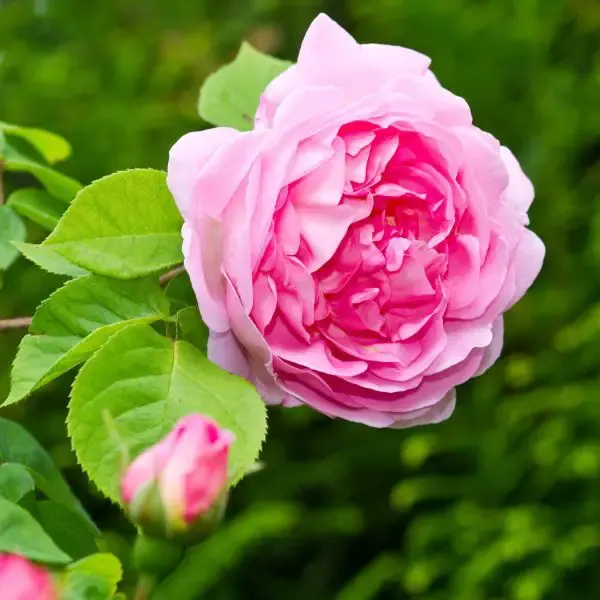
Also known as Ausfirst or Austance rose, Constance Spry is a medium to large shrub that can be trained as a climbing rose. It is a fast-growing variety that is strongly scented and features many leaves.
Its double flowers are large in size, pink in color and produced in the summer. The plant is typically 4.9 to 8.2 feet (1.5 to 2.5 m) both in length and width.
7. Crown Princess Margareta
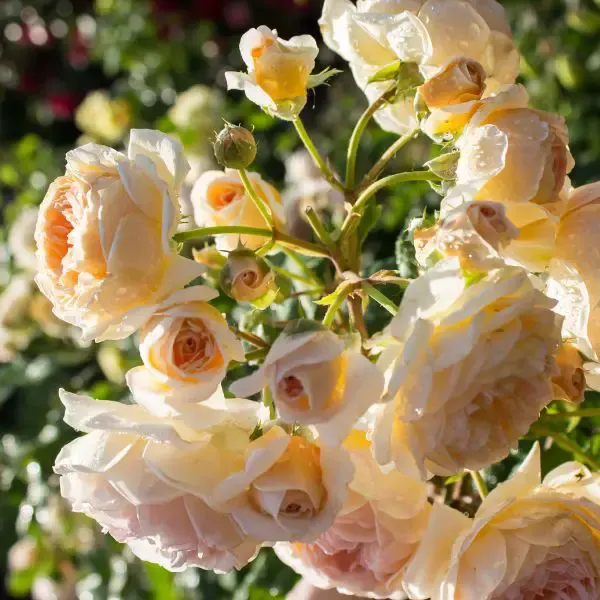
Crown Princess Margareta is also known as the Auswinter rose. It is another variety that can be grown as a shrub or trained as a climbing rose. When grown as a shrub, it peaks at about 5 feet (1.5 m).
However, when trained as a climbing rose, it is about 8.2 to 13 feet (2.5 to 4 m) in height and 3.3 to 5 feet (1 to 1.5 m) in spread. Its yellow, orange or apricot-orange flowers bloom in summer and autumn.
8. Danse de Feu
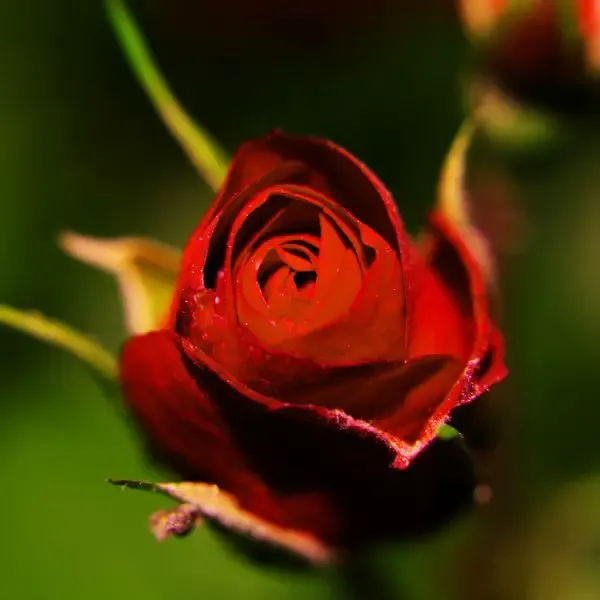
This is one of the best climbing roses for shady areas. Also called Spectacular, Danse du Feu typically grows to heights between 8.2 and 13 feet (2.5 and 4 m). It is also about 5 to 8.2 feet (1.5 to 2.5 ft) in spread.
From summer to autumn, the plant produces fragrant yellow and scarlet red roses. Growing in clusters, these are double flowers usually produced only once per season.
9. Eden Climber
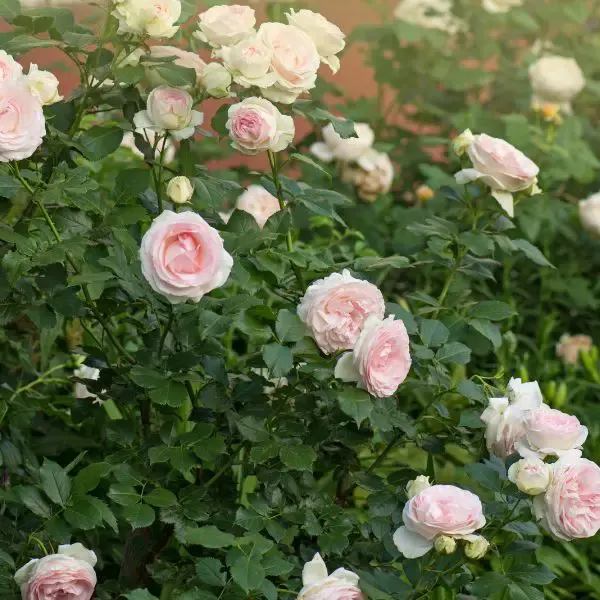
The hybrid rose known as Eden Climber is also called Pierre de Ronsard or Meiviolin. It is a large plant, usually 6 to 10 feet (1.8 to 3 m) tall. The fairly hardy plant has deep green leaves, a nice fragrance and large flowers.
Like its name suggests, the Eden Climber is a climbing rose and, because of its shade tolerance, it can comfortably grow in shady areas. Its double flowers come in cream, pastel pink and yellow.
10. Emily Gray
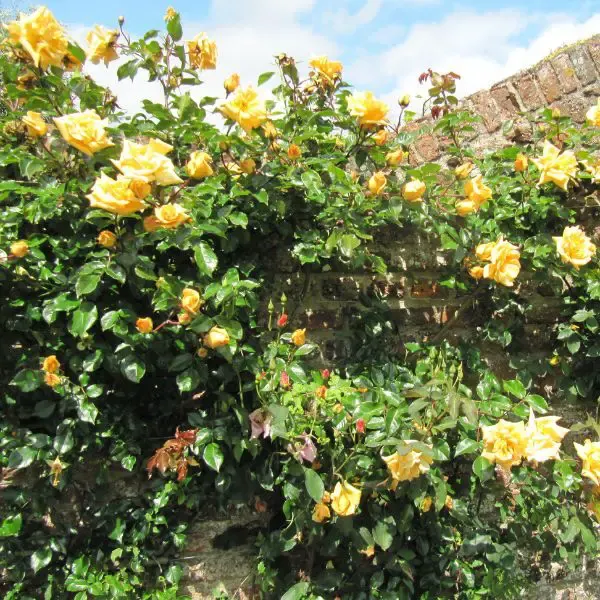
Emily Gray is a very vigorous rose variety that grows very high as well. The attractive plant ranges from 10 to 15 feet (3 to 4.6 m) in height and is usually about 10 feet (3 m) in spread.
Blooming in the summer, this climbing rose produces golden or yellow double flowers. It is shade tolerant and can also be planted along north-facing walls or fences.
11. Fair Bianca

Another hybrid rose cultivar which is very suitable for growing in a shaded area of your garden is Fair Bianca, also known as Ausca. It only grows about 2 to 5 feet (0.6 to 1.5 m) tall and 3 to 4 feet (0.9 to 1.2 m) wide.
It is a fragrant, hardy, pest resistant and heat tolerant rose. It blossoms heavily in the summer and irregularly in autumn. Its flowers have pure white petals.
12. Generous Gardener
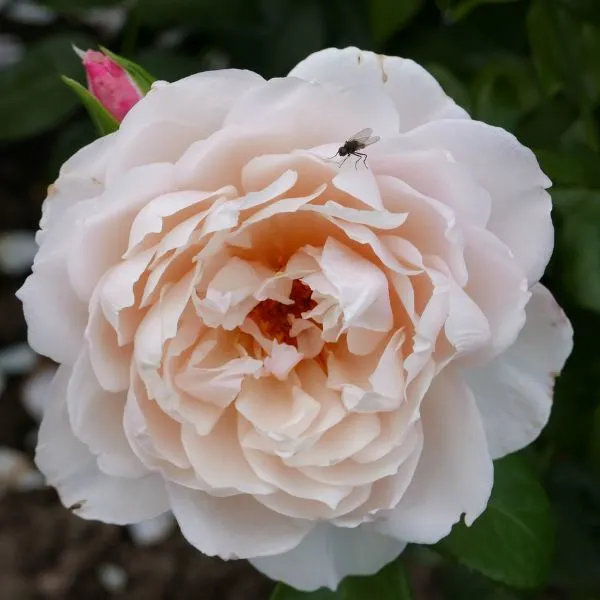
With gorgeous pale pink double flowers, Generous Gardener roses are hardy, disease resistant and shade tolerant. They are very popular climbing roses for shady areas.
The beautiful variety is usually 5 to 10 feet (1.5 to 3 m) in height and 3 to 4 feet (0.9 to 1.2 m) in spread. Growing in full sun to partial shade, the plant blooms severally from early or late spring into the summer.
13. Gertrude Jekyll
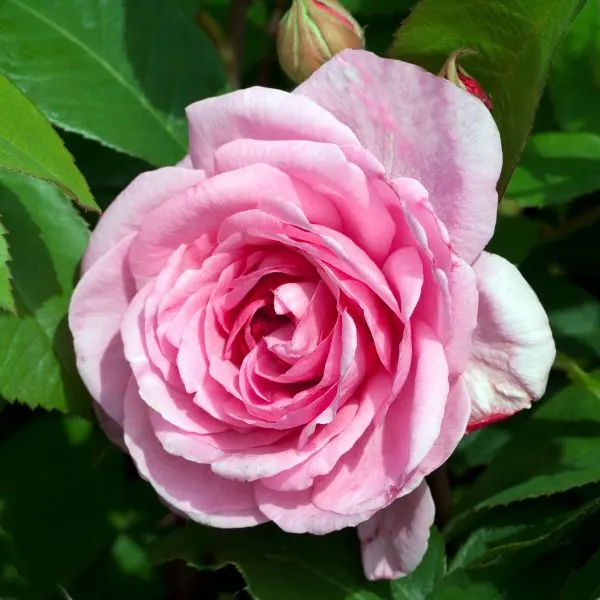
Known also as Ausbord, Gertrude Jekyll is a small shrub that can be trained as a climbing rose. It usually grows to about 3.3 to 5 feet (1 to 1.5 m) high and 1.6 to 3.3 feet (0.5 to 1 m) wide.
Complimenting its rich grayish green leaves, the plant produces strongly scented double flowers which are a deep rose-pink color from summer into the fall.
14. Golden Showers
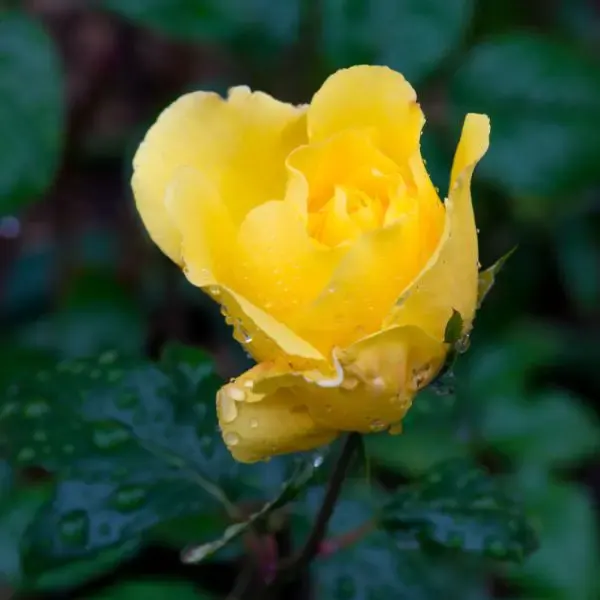
As its name suggests, the Golden Showers rose is a gorgeous plant with golden or bright yellow flowers. This hybrid is also fairly long, growing up to 8 to 10 feet (2.4 to 3 m) tall.
It is a climbing plant and its fragrance resembles that of honey. This makes its flowers very suitable for use in the making of bouquets. It blooms from midsummer into early autumn.
15. Graham Thomas
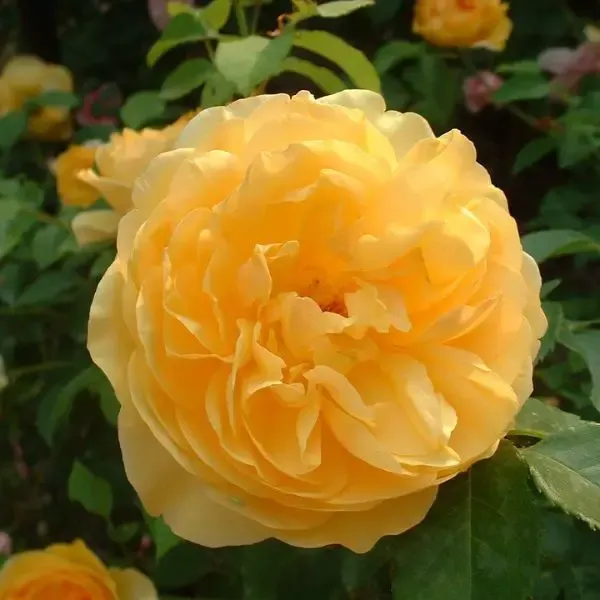
Graham Thomas roses are also called Ausmas roses. They are bushy, fast-growing and aromatic plants with may be grown as medium-sized shrubs or trained as climbing plants.
In the summer and autumn, their yellow double flowers appear, providing some contrast against their bright green leaves. In 2 to 5 years, they reach their maximum height and spread of 3.3 to 5 feet (1 to 1.5 m).
16. James Galway
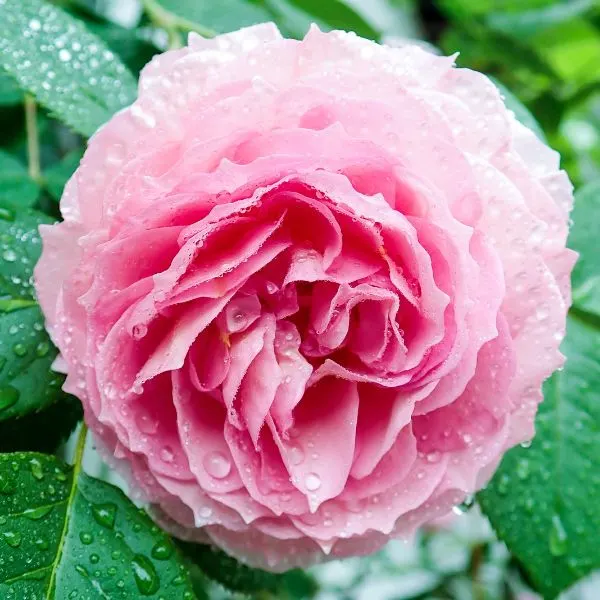
The James Galway rose is also known as Auscrystal. It is yet another tall climbing rose variety, growing up to 12.3 feet (3.75 m) in height. It can grow along walls, pergolas or obelisks up to 10 feet tall.
It produces a lot of flowers, which are light or mid pink at the center but fade to a lighter hue at the edges, from late spring into summer and autumn. Its lightly fragrant and medium-sized blooms are produced repeatedly.
17. Kew Rambler

Kew Rambler is a rambling rose (slightly different from climbing roses) suited to shady areas. This plant, preferring full sunlight to partial shade, grows very tall and has a very strong fragrance.
This rambling rose may grow up to 20 feet (6 m) tall and may be trained as small trees or climbers. They bloom once a season only, from summer to autumn. Their flowers are a warm pink color with a white center.
18. Madame Alfred Carrière
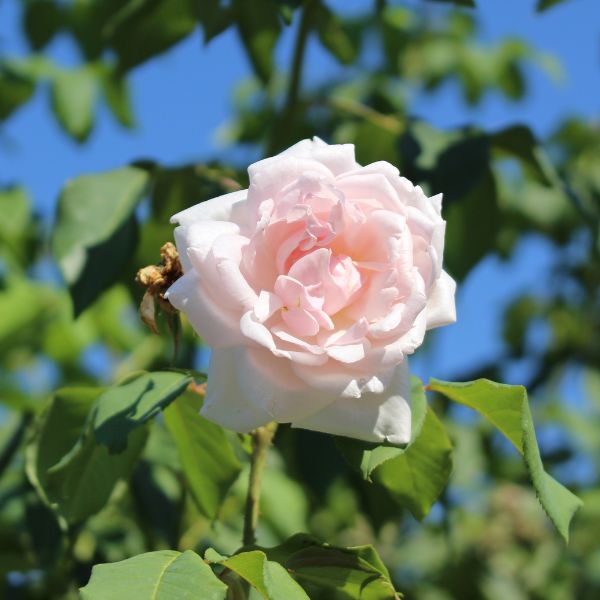
At a height of 13 to 26 feet (4 to 8 m) and spread of 5 to 8 feet (1.5 to 2.5 m), Madame Alfred Carrière is another tall, vigorous climbing rose that you can grow in full sun to partial shade.
It grows almost free of thorns, producing mid-sized flowers and light green leaves. Blooming severally in the summer and fall, the rose plant sports fragrant double flowers which are creamy white, pink or yellow in color.
19. Madame Grégoire Staechelin

Also known as Spanish Beauty, Madame Grégoire Staechelin is another large, fast-growing climbing rose, which may also be trained as a small tree. Like other roses, it is deciduous, with scented dark green leaves.
From early to late summer, its large pale pink double flowers bloom. They have distinctive dark veins on them. Madame Grégoire Staechelin is typically about 13 to 26 feet (4 to 8 m) tall and 8 to 13 feet (2.5 to 4 m) wide.
20. Maigold
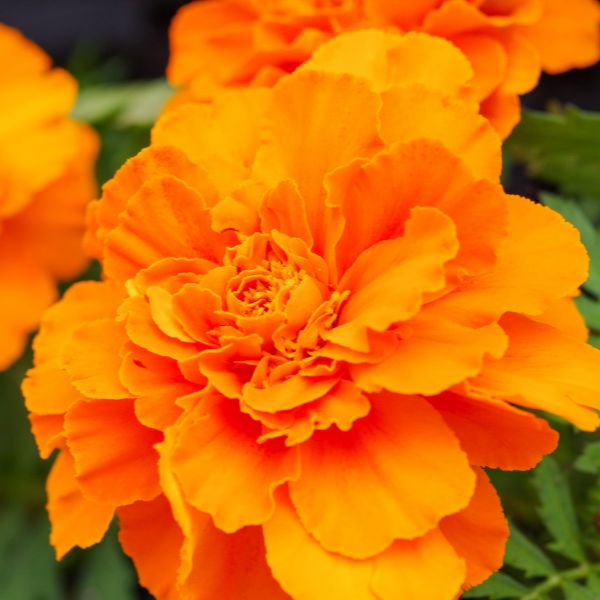
Another shade tolerant climbing rose for dimly lit areas of your garden or north-facing walls and fences is known as Maigold. This variety has thorny stems, with lots of dark green leaves.
Maigold roses grow up to between 5 and 8.3 feet (1.5 and 2.5 m) both in spread and height. They produce fragrant semi double coppery yellow, cream or pink flowers from early summer into the fall, usually flowering more than once.
21. Marmalade Skies
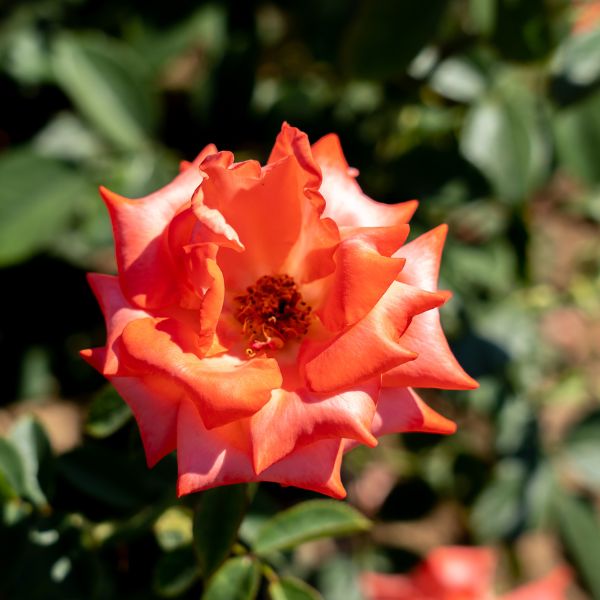
Marmalade Skies is a low-growing hybrid rose. It is tolerant of low lighting conditions but it may not produce lots of flowers in shady areas. From early summer to autumn, its reddish to vivid orange roses are produced.
The compact climbing rose grows to only about 3 feet (0.9 m) high. Because of this height, it is better planted near low fences and walls, or as a landscape plant.
22. Mary Rose
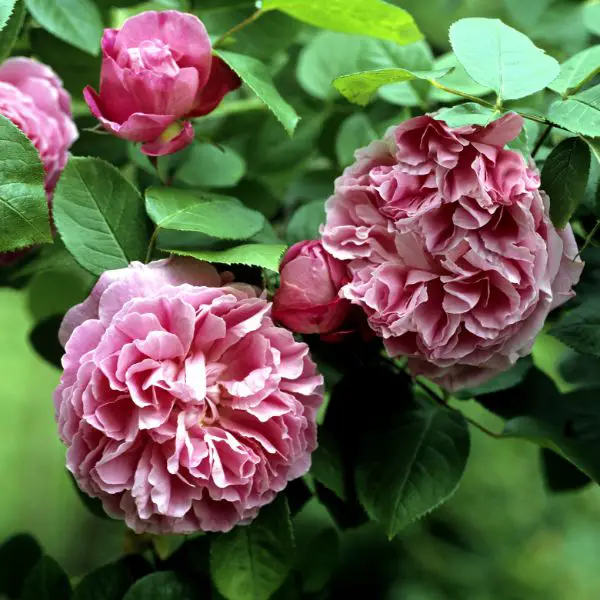
Also known as Ausmary, the Mary Rose rose is another hybrid English rose. Standing at a fair height of 4 to 5 feet (1.2 to 1.5 m), it is hardy, mildly fragrant and shade tolerant.
It blooms severally from summer until frost, in autumn or winter. Its flowers are dark pink, with paler pink whirls of rosettes inside them. The bushy shrub may be trained as a climbing rose plant.
23. Mortimer Sackler
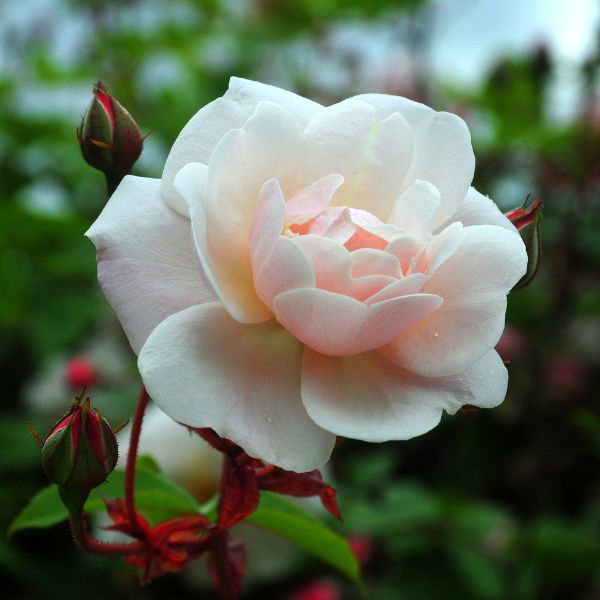
Mortimer Sackler is another gorgeous rose option you definitely should consider growing in a shady or dimly lit area. It has more recently been renamed Rosa ‘Mary Delany’.
This shrub may be trained as a climbing rose, with its distinct bright pink flowers that appear in the summer and fall. Its small bright green leaves grow on almost thornless stems which may be up to 12 feet (3.6 m) tall and 4.3 feet (1.3 m) wide.
24. New Dawn
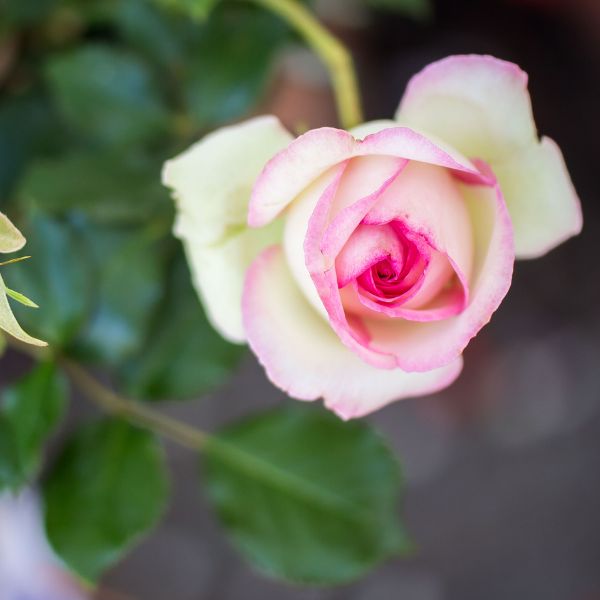
At a height and spread of 5 to 8.3 feet (1.5 to 2.5 m), New Dawn is a sizeable climbing rose. This plant, due to its shade tolerant nature, is very suitable for planting in shady areas.
In addition to silky dark green leaves, the plant has silvery pink flowers. These roses are fragrant and mid-sized, appearing from early in the summer until frost, which may be late in the fall or winter.
25. Passionate Kisses
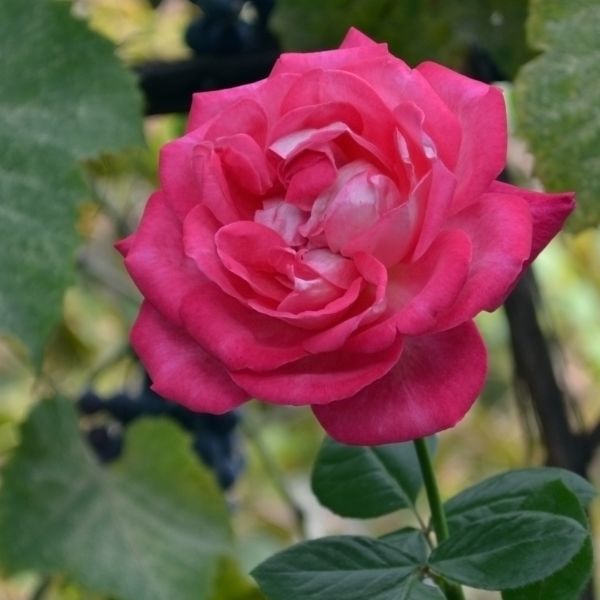
Rosa Meizebel or Passionate Kisses is a hybrid rose variety. It is a compact shrub, around 3.5 to 4 feet (1 to 1.2 m) tall. Its size makes it suitable to plant in pots and containers.
However, this rose can be raised as a climber and grown near short walls and fences which it can comfortably scale over. From spring to summer, the plant produces salmon-colored flowers continually and is comfortable in the shade.
26. Paul Noel

Paul Noel is another rambling rose that grows well in shady areas. With the ability to grow up to 19.7 feet (6 m) in length, this variety is very tall and can be trained into a small tree.
From late spring all through the summer and fall to early winter, this rose repeatedly produces light pink flowers. It has a strong apple-like fragrance and may be grown near large structures.
27. Phyllis Bide
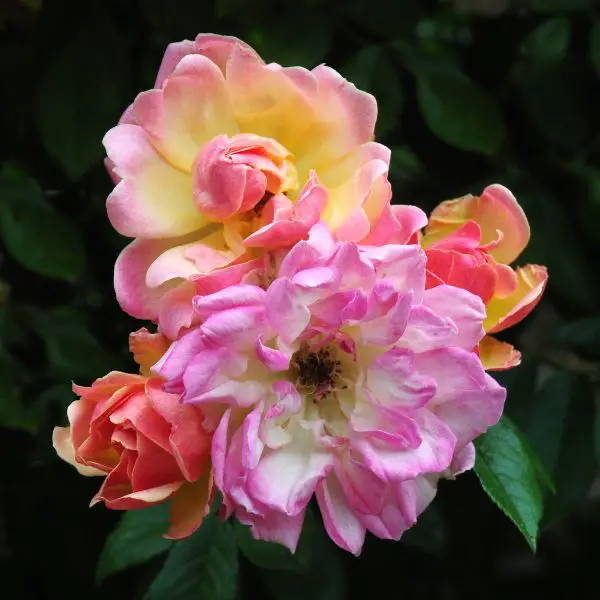
Yet another rambling rose (definition given in the FAQ section) suitable for shady areas, Phyllis Bide is a mid-sized plant with small blooms. It flowers repeatedly from late spring or early summer until frost.
Its flowers, with a medium sweet scent, may be entirely white or pale pink with salmon or apricot-pink insides. It grows up to 15 feet (4.5 m) tall and so may be grown to climb over structures reaching 10 feet.
28. Pilgrim
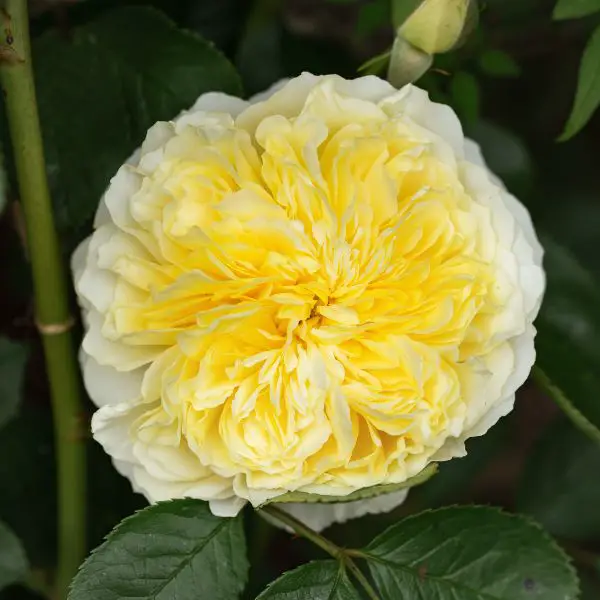
Pilgrim or Auswalker roses are mid-sized shrubs which may also be raised as short climbing plants. As shrubs, they are about 4.3 feet (1.3 m) high, with a spread of 1.6 to 3.3 feet (0.5 to 1 m).
As a climber, Pilgrim grows to between 5 and 8.3 feet (1.5 and 2.5 m) tall. It blooms from summer into the fall, producing white-lemon flowers with a soft yellow color within.
29. Playboy
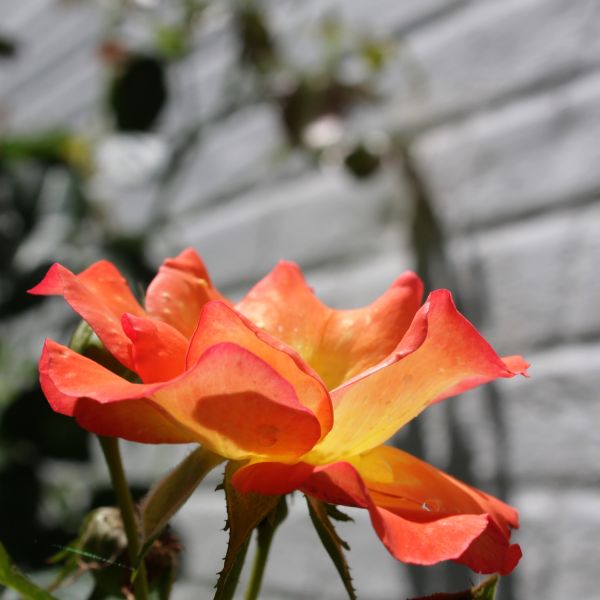
This is a mid-sized shrub that may be grown in containers and pots or trained as a climbing rose, approximately 4 feet (1.2 m) in spread and height. From summer until frost, it produces multicolored ruffled blooms.
These small, moderately fragrant flowers come in various shades of reddish orange, gold and scarlet or pink. These moderately fragrant, beautiful blossoms are contrasted by dark green leaves.
30. Rambling Rector
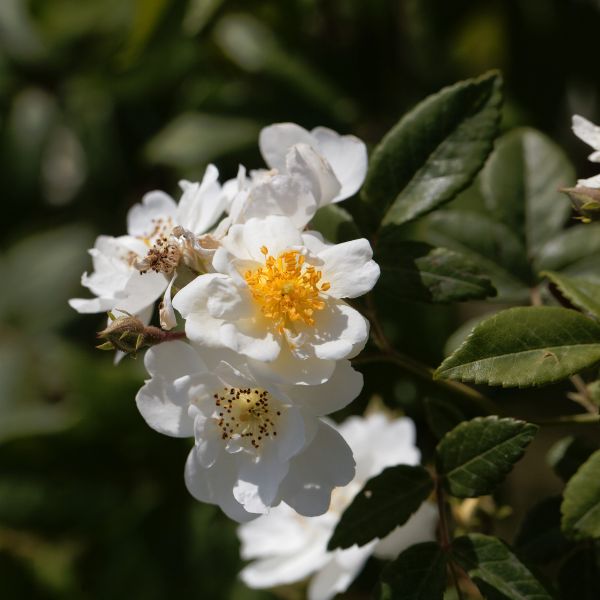
Rambling Rector, as its name suggests, is a rambling rose that grows very tall, possibly into a large tree. It grows from 24.6 to 30 feet (7.5 to 9 m) tall, with small creamy white flowers.
The strongly fragrant plant flowers only once in the summer. It grows fast, is ideal for large gardens and is an excellent climbing rose for shady regions on large structures.
31. Red Knock Out
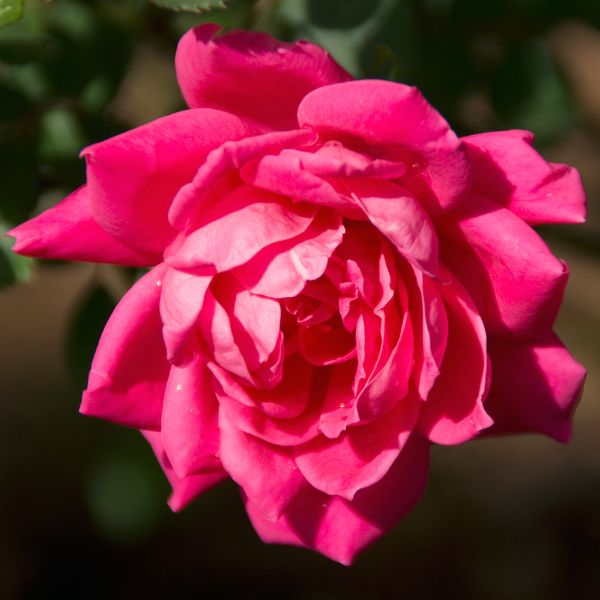
The Red Knock Out rose is also called Radrazz. It is a drought and disease resistant rose variety. It is known as a very hardy climbing rose that blooms continuously from early spring till frost.
At a height of 3 to 4 feet (0.9 to 1.2 m), it is a low-growing shrub that may be trained as a mid-sized climbing rose. Its flowers are usually cherry red, hence their name.
32. Seafoam
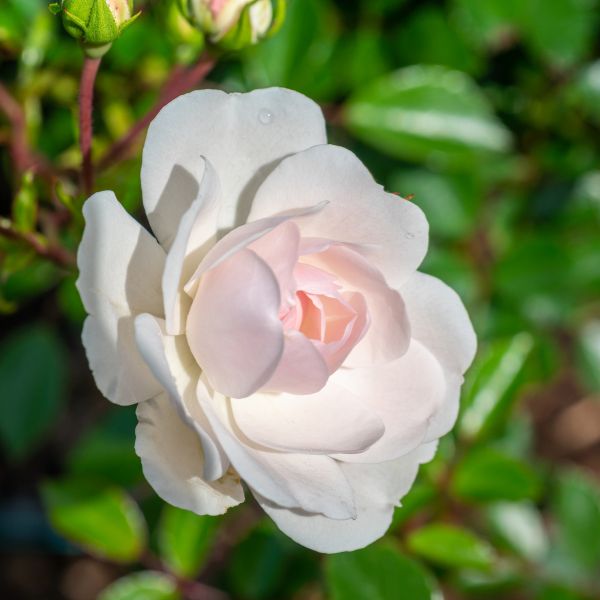
Seafoam is another hybrid rose that works very well in dark or shady spots. It is a small shrub about 2 to 3 feet (0.6 to 0.9 m) high that can also be raised as a short climbing rose.
Its beautiful white blossoms appear repeatedly from spring into summer and then autumn, until frost sets in. Because of its size and length, it is best planted near short fences or as a landscape rose.
33. Shropshire Lad

Ausled or Shropshire Lad roses are fast-growing hardy plants with almost thornless stems. They are shrubs but can be grown as climbing roses in shady areas.
They range from 8.2 to 13 feet (2.5 to 4 m) in height and 5 to 8.2 feet (1.5 to 2.5 m) in spread. In the summer and fall, their pale orange and peach-pink flowers are produced, with strong friuity scents.
34. Teasing Georgia
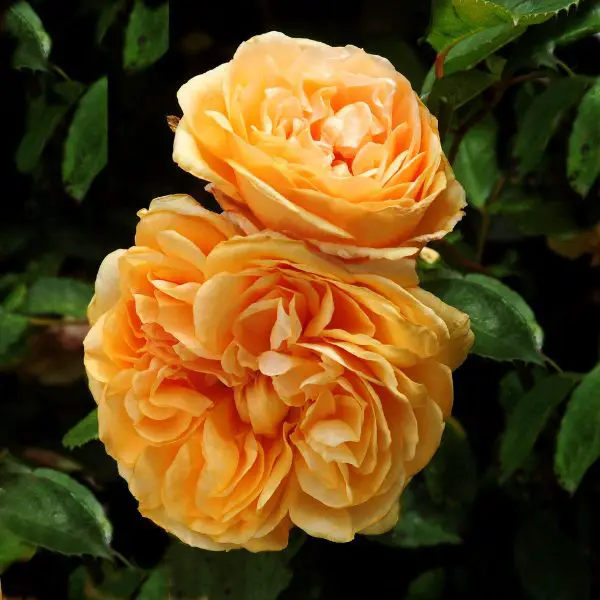
Teasing Georgia is also called Rosa Ausbaker. It is a low shrub, about 4 feet (1.2 m) tall, that may also be trained as a small climbing rose, on average 5 to 8.2 feet (1.5 to 2.5 m) tall. It is a shade tolerant variety.
Also, the plant is about 1.6 to 3.3 feet (0.5 to 1 m) in spread. In the summer and fall, its deep yellow to lemon colored blooms appear.
35. Veilchenblau
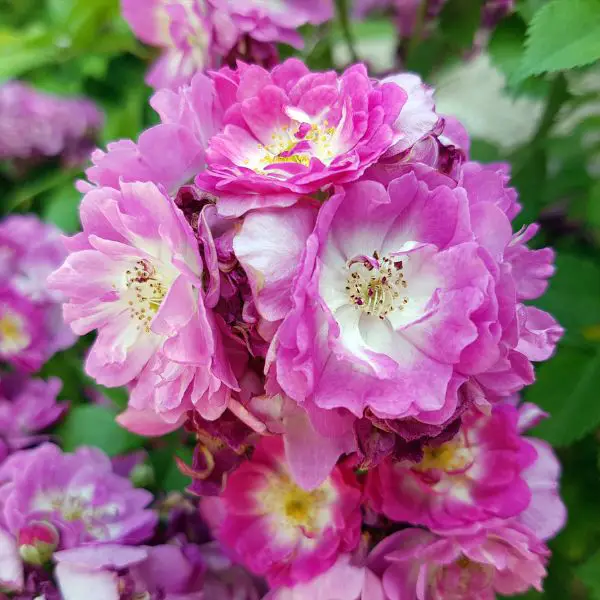
Another rambling rose variety that can be planted as a climbing rose in shady or dimly lit areas is known as Veilchenblau. It is a medium-sized plant, growing up to 15 feet (4.5 m) tall.
It flowers once only in the summer, producing small medium to strongly scented reddish purple blooms with white centers. Due to its height, it is able to climb over structures up to 10 feet high.
36. Zephirine Drouhin
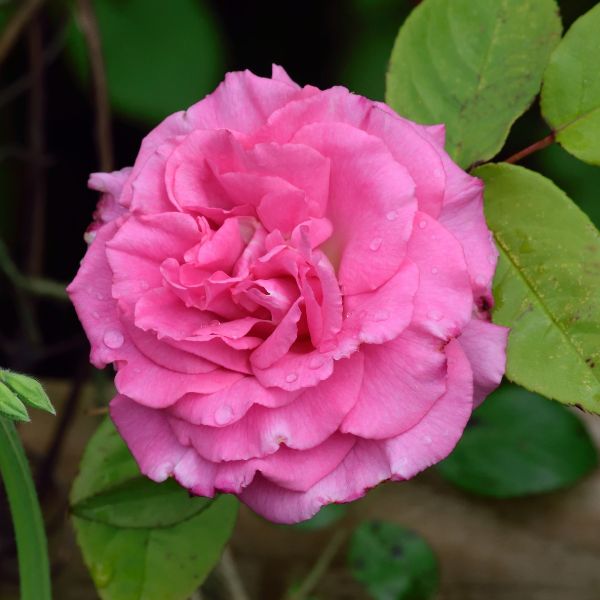
The last climbing rose for shady areas on our list is Zephirine Drouhin. This thornless rose flowers in the summer and autumn when it produces vibrant deep pink blooms.
It adds more color to your garden area and has a strong fruity (raspberry) fragrance. It is typically 15 to 20 feet (4.6 to 6.1 m) tall and 4 to 6 feet (1.2 to 1.8 m) in spread.
Printable list of roses for shady areas
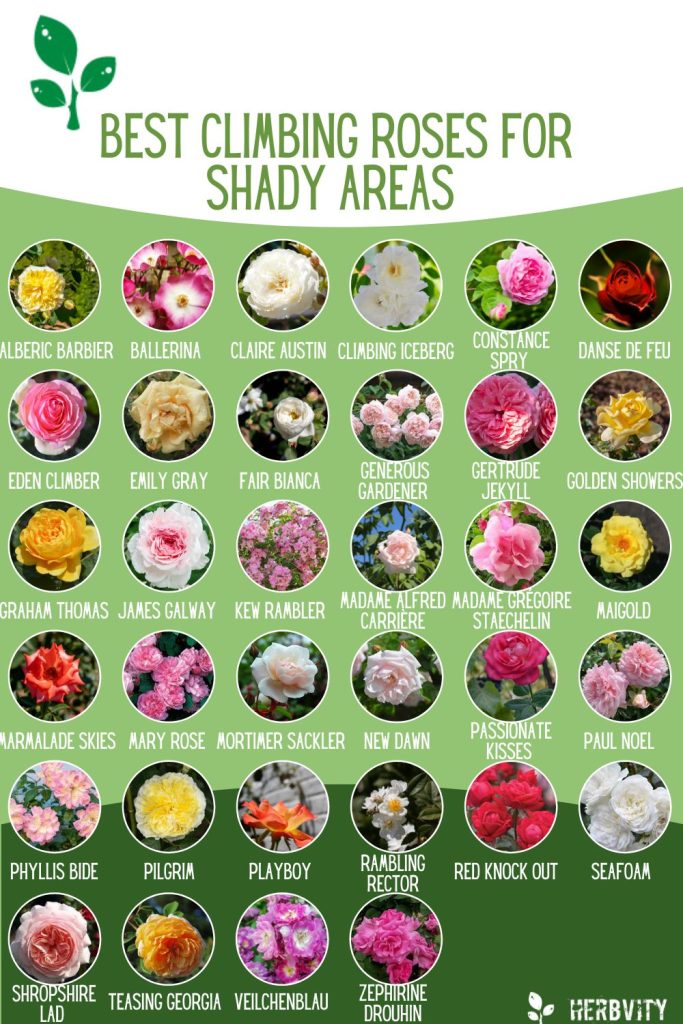
FAQs
Are there any climbing roses that like shade?
Yes, there are several climbing roses that like shade. Thirty-six (36) examples of such roses are listed and briefly described above. Some of the most popular ones are: Climbing Iceberg, Constance Spry, Gertrude Jekyll and Veilchenblau.
What are the fastest growing climbing roses?
Some of the fastest growing climbing roses on our list include Constance Spry, Golden Showers and New Dawn, with New Dawn being the fastest.
What is the difference between a climbing rose and a rambling rose?
The main difference between a climbing rose and a rambling rose is their flowering frequency. Like climbing roses, rambling roses are durable plants with long and flexible stems that can be raised to climb over trellises, pergolas and fences.
However, while rambling roses tend to produce one large batch of small flowers in the summer, climbing roses tend to flower repeatedly, bringing forth larger blooms at different points in time.
Conclusion
We have listed above thirty-six (36) of the best climbing (and rambling) roses for shady areas. This article will be helpful if you’re looking to grow some shade tolerant rose varieties on north-facing walls or other locations with low lighting.
It includes more compact shrubs that can be grown on trellises and trained as short climbers, mid-sized varieties and tall or very tall ramblers which can be grown as short, medium-sized or large trees. They are used for several purposes: as covering for fences, landscape plants or other reasons.
Remember, while growing your roses, that they need nutrient rich moisture retentive but well drained soil, with consistent watering in their root area. Climbing roses in particular should be supported with trellises or wires, at least until they are established in the soil.
More plant stuff
